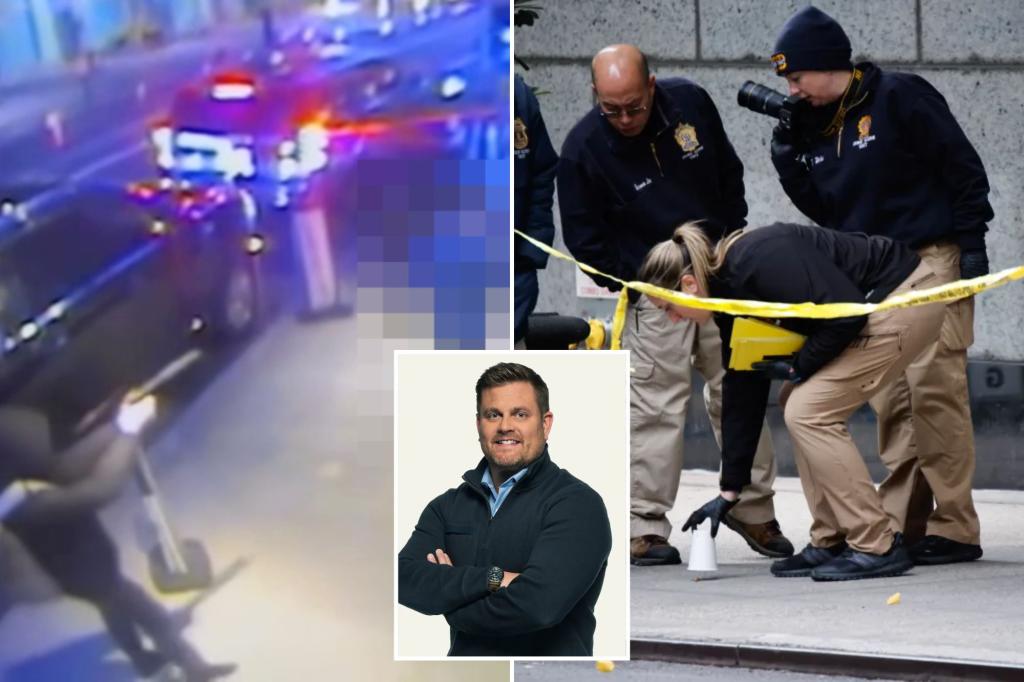On Wednesday morning, a tragic incident unfolded outside a Midtown hotel as Brian Thompson, the CEO of UnitedHealthcare, was shot and killed by a masked gunman. Police sources revealed that the suspect might have attempted to leave a cryptic message on the ammunition used in the attack. The message reportedly included words such as “deny,” “depose,” and “defend,” suggesting a possible motive or thematic intent behind the assassination. Thompson, who was 50 years old, was preparing to host an investors’ conference when he was ambushed at around 6:46 a.m. This shocking event not only drew attention to the circumstances surrounding the CEO’s death but also raised questions about the underlying motives of the assailant.
The investigation into the murder has led the NYPD to recover crucial evidence at the scene, including three live 9-millimeter rounds and three discharged shell casings found in front of the Hilton hotel on Sixth Avenue, where the shooting occurred. Law enforcement officials confirmed that the ammunition contained identifiers that suggest an intentional message left by the shooter. Surveillance footage obtained by media outlets indicated that the gunman was equipped with a silencer, displaying a level of sophistication and experience in his shooting technique. The nature of these findings has led investigators to believe that the individual responsible for the crime could be a seasoned criminal.
Despite the apparent planning and execution behind the attack, the gunman may have made significant errors that could lead investigators to his identity. Prior to the shooting, he was seen stopping by a nearby Starbucks, where he discarded his coffee cup in a trash can. In a stroke of investigative luck, law enforcement officials retrieved the discarded cup to collect potential DNA evidence. Such mistakes underscore a critical aspect of criminal investigations: even the most meticulously planned operations can be undermined by small oversights that leave behind valuable forensic evidence.
In addition to the coffee cup, investigators found a phone discarded in an alleyway near the Hilton. They believe this device may belong to the suspect and could contain vital information that will assist in the ongoing manhunt. Detectives are now piecing together evidence from various sources, including the cryptic messages on the ammunition, the surveillance footage, and the physical items left behind by the shooter. These elements collectively form a clearer picture of the suspect and the events leading up to the murder.
As the NYPD continues its investigation, a manhunt for the suspect is actively underway. Authorities have announced a $10,000 reward for information that could lead to the capture of the assailant. This incentive aims to encourage members of the public to come forward with any leads that may help in solving the case. The resources dedicated to this investigation highlight the serious nature of the crime and the urgency with which law enforcement seeks to bring the perpetrator to justice and assuage public concern.
The assassination of Brian Thompson has sent shockwaves through the corporate world, raising concerns about the safety of executives in high-profile positions and the potential motives behind targeted attacks. The unfolding investigation serves as a reminder of the complexities surrounding such violent acts, where personal, professional, and social factors can intertwine. As police work tirelessly to unravel the mystery, the city remains on edge, hoping for a swift resolution to this chilling case.











